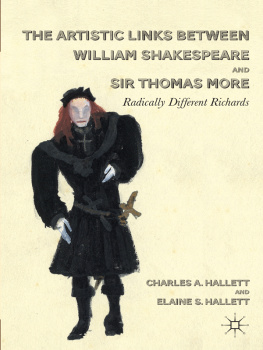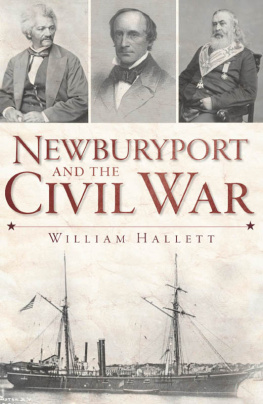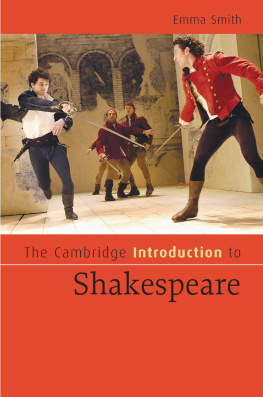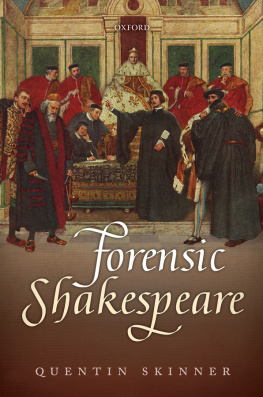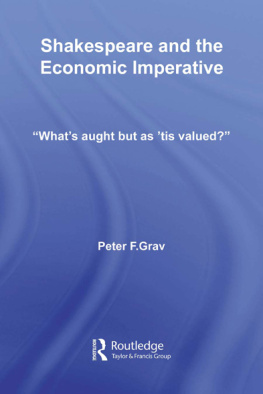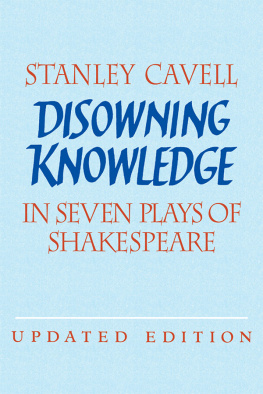THE ARTISTIC LINKS BETWEEN WILLIAM SHAKESPEARE AND SIR THOMAS MORE
OTHER WORKS BY CHARLES A. HALLETT AND ELAINE S. HALLETT
Charles
Middletons Cynics: Middletons Insight into the Moral Psychology of the Mediocre Man (1975)
Charles and Elaine
The Revengers Madness: A Study of Revenge Tragedy Motifs (1980)
Analyzing Shakespeares Action: Scene versus Sequence (1991, 2006)
THE ARTISTIC LINKS BETWEEN WILLIAM SHAKESPEARE AND SIR THOMAS MORE
RADICALLY DIFFERENT RICHARDS
Charles A. Hallett and Elaine S. Hallett


THE ARTISTIC LINKS BETWEEN WILLIAM SHAKESPEARE AND SIR THOMAS MORE
Copyright Charles A. Hallett and Elaine S. Hallett, 2011.
All rights reserved.
First published in 2011 by
PALGRAVE MACMILLAN
in the United Statesa division of St. Martins Press LLC,
175 Fifth Avenue, New York, NY 10010.
Where this book is distributed in the UK, Europe and the rest of the world, this is by Palgrave Macmillan, a division of Macmillan Publishers Limited, registered in England, company number 785998, of Houndmills, Basingstoke, Hampshire RG21 6XS.
Palgrave Macmillan is the global academic imprint of the above companies and has companies and representatives throughout the world.
Palgrave and Macmillan are registered trademarks in the United States, the United Kingdom, Europe and other countries.
ISBN: 9780230113671
Library of Congress Cataloging-in-Publication Data
Hallett, Charles A., 1935
The Artistic Links Between William Shakespeare and Sir Thomas More : Radically Different Richards / Charles A. Hallett, Elaine S. Hallett.
p. cm.
ISBN 9780230113671 (hardback)
1. Shakespeare, William, 15641616. King Richard III. 2. More, Thomas, Sir, Saint, 14781535. History of King Richard the Third. 3. Shakespeare, William, 15641616. King Richard IIISources. 4. Richard III, King of England, 14521485In literature. 5. Shakespeare, William, 15641616Technique I. Hallett, Elaine S., 1935 II. Title.
PR2821.H35 2011
822.33dc22
2010049888
A catalogue record of the book is available from the British Library.
Design by Newgen Imaging Systems (P) Ltd., Chennai, India.
First edition: June 2011
10 9 8 7 6 5 4 3 2 1
Printed in the United States of America.
To June Schlueter,
who asked some pertinent questions
why does Shakespeare want to write drama?
what does a work of drama do?
ACKNOWLEDGMENTS
Our perpetual gratitude, first, to Hugh Richmond, our peer reviewer, and to Brigitte Shull, Jo Roberts, and the staff at Palgrave Macmillan, who relieved us of the labors of slaving over our manuscript by determining that it was ready for print. June Schlueter deserves many blessings as well for playing the role of the Grim Ripper in helping us to meet Palgraves word limit (and for offering her insights on the books numerous early drafts). For critiquing the entire manuscript from the perspective of his many years on stage and from his recent experience as a Theatre Panelist for Londons Olivier Awards, we owe much to Frederick Pyne. Thanks, too, to all of those kind friends who suggested improvements in individual chaptersSarah Stanton, Heather Dubrow, Hugh Boulton, and our array of DavidsDavid Kastan, David Landman, David Casagrande. Their early challenges helped us to refine our arguments. Production details were kindly overseen by Richard Bellis and Rohini Krishnan, and, at the perfect moment, Betsy Kruger supplied us, in reproducible digital form, with the Motley image that graces our cover.
Debts to our predecessors whose work on Richard III made our task easier have been acknowledged in the Notes; however, Emrys Jones, Robert Turner, Chris Hassel, Peter Holland, and John Jowett deserve special notice in this regard, as does George M. Logan, whose timely publication of an excellent reading edition of The History of King Richard III made Sir Thomas Mores work conveniently accessible. The works of Eric Voegelin, Maynard Mack, and Brian Vickers have also informed this study.
For financial assistance that allowed us to visit Shakespeare libraries in England and helped to underwrite the costs of writing and preparing the manuscript, we owe much to Fordham University, and for graciously awarding Charles the status of Visiting Scholar, thereby putting its libraries and computer facilities at our disposal, we extend thanks to Dartmouth College, where most of this book was written, and to Dartmouths Peter Travis and Susan Bibeau. We are also grateful for the generosity of Eric Rosenberg and Michele Kolb, who provided our home office in New York City.
And let us not forget those who gave us needed encouragement as we prepared this bookHarry Keyishian, Mark Caldwell, Barbara Hanrahan, Matthew Frost, Ronnie Mulryne, and George Zournas.
Shakespeare quotations are from G. Blakemore Evans, ed., The Riverside Shakespeare, 2e, 1997 Heinle/Arts & Sciences, a part of Cengage Learning, Inc. Reproduced by permission. www.cengage.com/permissions.
Citations to Thomas Mores History of King Richard the Third in our text are to the edition prepared by George M. Logan: The History of King Richard the Third: A Reading Edition. By Thomas More. Bloomington: Indiana University Press, 2005. Reproduced by permission. www.indiana.edu/~iupress/rights/rightsbook.html.
Paul Budra, Drama from A Mirror for Magistrates and the de casibus tradition. University of Toronto Press, 2000 (pp. 7982). Reprinted with permission of the publisher.
Van Laan, Thomas F. Role-playing in Shakespeare University of Toronto Press, 1978 (p. 144). Reprinted with permission of the publisher.
Cover image from the Motley Designs Collection is used courtesy of The Rare Book & Manuscript Library of the University of Illinois at Urbana-Champaign. The costume was designed for the Glen Byam Shaw production of Richard III at the Shakespeare Memorial Theatre, Stratford-upon-Avon (1953).
INTRODUCTION
PREFACE
SHAKESPEARES SEARCH FOR THE ESSENCE OF DRAMATIC FORM
Artistic Links takes as its governing theme the idea that Shakespeares imagination was triggered by the assertions of a band of citizens in Thomas Mores History of King Richard III who complained that Richard obtained the crown of England by performing on scaffolds. More saw Richard as a vain actor whose schemes were invariably transparent. In the stage plays that More was condemning Shakespeare saw a dramatic flair he wanted to imitate. Mores vivid descriptions of Richards penchant for deceiving audiences, it seems, inspired Shakespeares investigations of Richards methods: Can I use Richards techniques to make Richards story work on stage? Shakespeare, we argue, challenged himself to reproduce Richards methods by postulating a Richard who objected to Mores denigration of his talents and who would provide his own version of the magnificent series of deceptions through which he obtained the crown. His Richard would win more than a crown; he would win over the theater audience. The book studies the process through which Shakespeare transformed the eloquent narrative prose of Mores History into compelling drama by mounting each segment of Richards autobiography on a reversal structure that would become the hallmark of his mature style. Shakespeare takes Mores archetypal tyrant and transforms him into a consummate dramatist who offers his theater audience a showcase of well-crafted scenes. Our scene-by-scene analysis presents a detailed account of the discoveries Shakespeare made while writing
Next page
